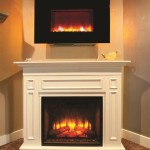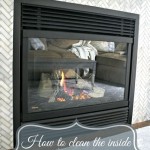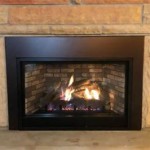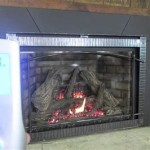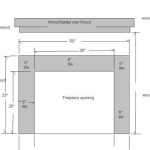How to Clean an Iron Fireplace: A Comprehensive Guide
Iron fireplaces, often admired for their aesthetic appeal and durability, require regular maintenance to preserve their beauty and functionality. The accumulation of soot, ash, and rust can detract from the fireplace's charm and, in some cases, accelerate its deterioration. This article provides a detailed guide on how to effectively clean an iron fireplace, covering various cleaning methods and preventive measures.
Understanding the Nature of Iron Fireplace Grime
Before embarking on the cleaning process, it's essential to understand the nature of the grime that accumulates on iron fireplaces. Soot, a byproduct of incomplete combustion, is composed primarily of carbon and can leave black, powdery deposits on surfaces. Ash, the non-combustible residue from burned wood, can also contribute to surface buildup. Furthermore, iron, when exposed to moisture and oxygen, is susceptible to rust formation, which can compromise the integrity of the fireplace over time.
The composition of the grime dictates the appropriate cleaning methods. For instance, loose soot and ash can often be removed with dry cleaning methods, while stubborn soot and rust may require more aggressive solvents and abrasives. Understanding the underlying causes of the grime accumulation, such as burning unseasoned wood or neglecting regular chimney sweeps, is crucial for preventing future buildup.
Essential Tools and Materials
A successful cleaning operation requires the right tools and materials. The following list outlines the essential items for cleaning an iron fireplace:
*Drop cloths or plastic sheeting: To protect the surrounding floor and furniture from soot and cleaning solutions.
*Vacuum cleaner with a brush attachment: For removing loose soot and ash.
*Wire brush: For scrubbing away stubborn soot and rust.
*Soft cloths or sponges: For applying cleaning solutions and wiping down surfaces.
*Bucket: For holding cleaning solutions.
*Dish soap: A mild detergent for general cleaning.
*White vinegar: A natural cleaning agent for removing rust and mineral deposits.
*Baking soda: A gentle abrasive for removing stubborn stains.
*Commercial fireplace cleaner: For heavy-duty cleaning (select a product specifically designed for iron fireplaces).
*Rust remover: For addressing significant rust buildup.
*Protective eyewear: To prevent splashes of cleaning solutions from entering the eyes.
*Gloves: To protect the hands from dirt, grime, and cleaning chemicals.
*Face mask: To protect the respiratory system from inhaling soot and dust.
*Steel wool (optional): For removing stubborn rust, but use cautiously as it can scratch the iron's surface.
*Paste wax or sealant (optional): For protecting the cleaned iron fireplace from rust.
Before using any commercial cleaning product, it's important to read and follow the manufacturer's instructions carefully. Always test the product on an inconspicuous area of the fireplace to ensure it doesn't damage the finish.
Step-by-Step Cleaning Process
The cleaning process can be broken down into several stages, each addressing a specific aspect of grime removal and surface restoration.
Step 1: Preparation
Begin by preparing the work area. Spread drop cloths or plastic sheeting around the fireplace to protect the floor and surrounding furniture. Remove any loose debris, such as ashes or wood chips, from the fireplace and the surrounding hearth. Ensure adequate ventilation by opening windows or using a fan.
Step 2: Dry Cleaning
Use a vacuum cleaner with a brush attachment to remove loose soot and ash from the fireplace. Pay particular attention to corners, crevices, and intricate details. Alternatively, a stiff-bristled brush can be used to sweep away loose debris. Dispose of the collected debris responsibly.
Step 3: Wet Cleaning (General Cleaning)
Mix a solution of warm water and dish soap in a bucket. Dip a soft cloth or sponge into the soapy water and wring out the excess. Gently wipe down the entire surface of the iron fireplace, paying attention to areas with visible soot and grime. Rinse the cloth or sponge frequently in clean water to remove accumulated dirt. After wiping down the surface with soapy water, rinse it with clean water to remove any soap residue. Allow the fireplace to air dry completely.
Step 4: Addressing Stubborn Soot and Stains
For stubborn soot and stains, a stronger cleaning solution may be necessary. A paste made from baking soda and water can be applied to the affected areas and allowed to sit for several minutes before being scrubbed with a soft cloth or sponge. Alternatively, a commercial fireplace cleaner can be used, following the manufacturer's instructions carefully. Always test the cleaner in an inconspicuous area first to ensure it doesn't damage the finish.
Step 5: Rust Removal
Rust is a common problem with iron fireplaces, especially in damp environments. For light rust, a solution of white vinegar and water can be effective. Apply the solution to the rusted areas and allow it to sit for several minutes before scrubbing with a wire brush or steel wool (use steel wool cautiously). For heavier rust, a commercial rust remover may be necessary. Follow the manufacturer's instructions carefully, and always wear gloves and eye protection when handling rust removers. After removing the rust, rinse the area with clean water and allow it to dry completely.
Step 6: Finishing and Protection (Optional)
Once the fireplace is clean and dry, a coat of paste wax or a sealant specifically designed for iron can be applied to protect it from future rust and corrosion. Apply the wax or sealant evenly and allow it to dry according to the manufacturer's instructions. Buff the surface with a soft cloth to achieve a lustrous finish. This step is particularly important in areas with high humidity.
Alternative Cleaning Methods
While the step-by-step process outlined above is generally effective, alternative cleaning methods may be more appropriate depending on the specific circumstances.
*Steam Cleaning: Steam cleaning can be an effective way to remove soot and grime without the use of harsh chemicals. A steam cleaner can be used to loosen the buildup, which can then be wiped away with a cloth.
*Dry Ice Blasting: This method uses compressed air to propel dry ice pellets against the surface of the fireplace, effectively removing soot and grime without damaging the underlying iron. This is typically done by professionals.
*Powder Coating (for severely rusted fireplaces): For fireplaces with significant rust damage, powder coating may be a viable option. This involves applying a protective coating of powder-based paint to the iron surface after it has been cleaned and prepped. This is typically done by professionals.
The selection of a cleaning method depends on factors such as the severity of the grime, the type of finish on the fireplace, and the availability of resources.
Preventive Measures for Maintaining an Iron Fireplace
Preventing grime buildup is crucial for minimizing the need for frequent and intensive cleaning. The following preventive measures can help maintain the condition of an iron fireplace:
- Regular Chimney Sweeping: Schedule regular chimney sweeps to remove creosote and soot buildup, which can contribute to fireplace grime. The frequency of chimney sweeps depends on the frequency of fireplace use and the type of wood burned.
- Burning Seasoned Wood: Burning seasoned wood reduces the amount of soot produced during combustion. Seasoned wood has a lower moisture content than green wood, resulting in a cleaner burn.
- Proper Ventilation: Ensure adequate ventilation in the room when using the fireplace to allow for proper airflow and reduce the buildup of soot.
- Avoid Burning Trash or Treated Wood: Burning trash or treated wood can release harmful chemicals and contribute to soot buildup.
- Regular Dusting: Dust the fireplace regularly to prevent the accumulation of loose soot and ash.
- Apply a Protective Coating: Applying a protective coating of paste wax or a sealant can help prevent rust and corrosion.
By implementing these preventive measures, the frequency and intensity of cleaning can be significantly reduced, preserving the beauty and longevity of the iron fireplace.

How To Keep Cast Iron Fireplaces Clean

How To Re A Cast Iron Fireplace

How To Re A Cast Iron Fireplace Direct Fireplaces

Nostalgiecat How To Remove Rust From A Cast Iron Fireplace

How To Re A Cast Iron Fireplace Direct Fireplaces

How To Re A Cast Iron Fireplace Direct Fireplaces

How To Clean A Cast Iron Fireplace Our Top Tips Cleanipedia

How To Easily Re A Lackre Cast Iron Fireplace Melanie Lissack Interiors

How To Re A Cast Iron Fireplace Diy Doctor

How To Clean A Cast Iron Fireplace Restoration
Related Posts



